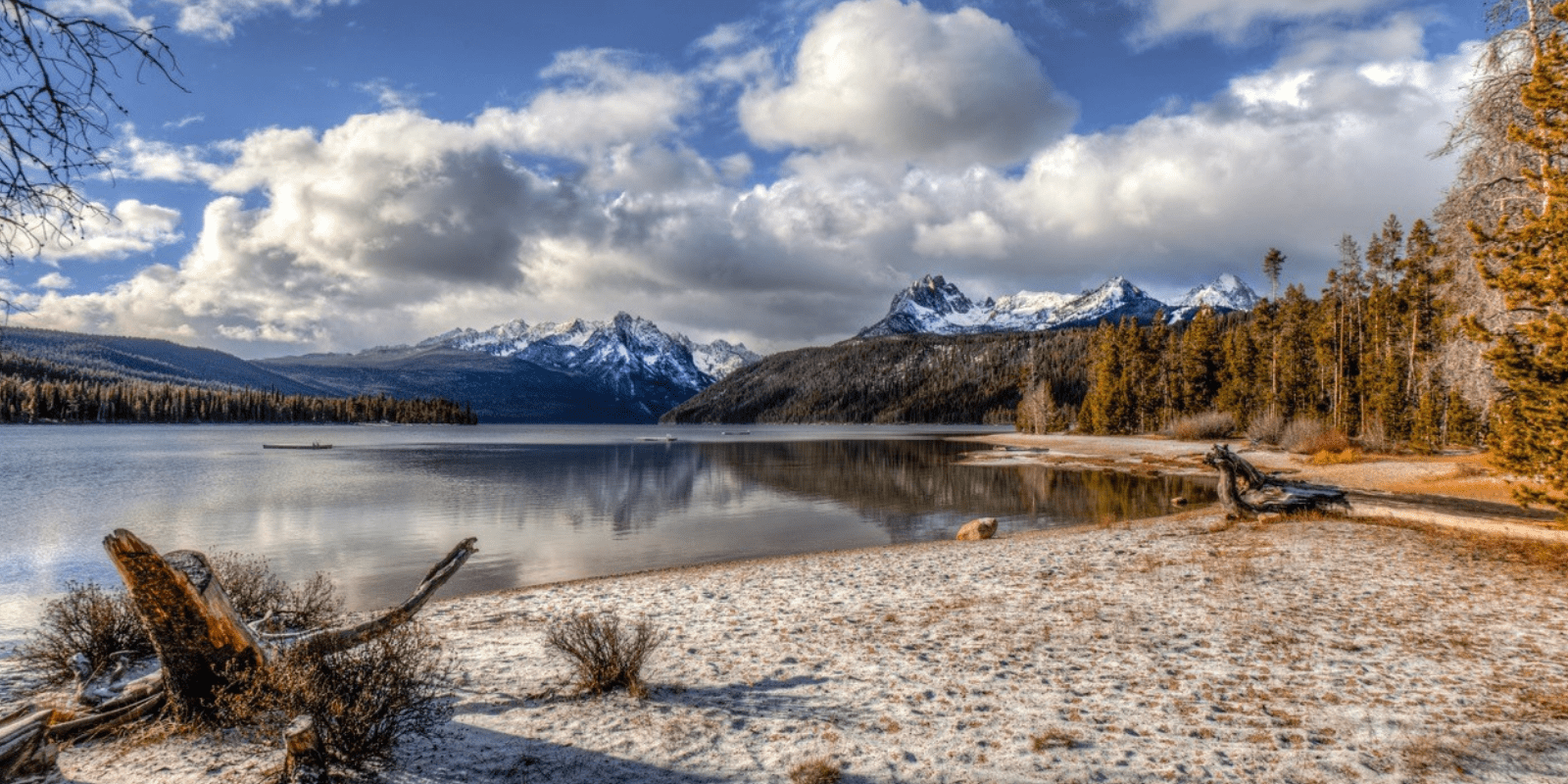We have much more to do and your continued support is needed now more than ever.
Finding Common Ground on the lower Snake River
From their respective sides of the aisle, Rep. Mike Simpson and Gov. Kate Brown champion salmon recovery

Salmon define the rivers, communities, and culture of the Northwest, but they are increasingly at risk. In the Columbia River Basin, 13 different runs of salmon are listed as endangered or threatened, straining the ecosystems and communities that depend on them.
At the heart of this issue are the cumulative, negative impacts of the four dams on the lower Snake River, a major Columbia River tributary, which has severed fish passage to rich spawning habitats in Idaho. Climate change is adding another challenge as warming water temperatures in the reservoirs behind the dams threaten salmon which depend on cold water and snowmelt.
From commercial fisheries off the Pacific Coast in Washington and Oregon and tribal communities which have depended on salmon for food for generations, to the outdoor guiding communities in central Idaho, there just aren’t enough fish. Our regional ecology is feeling the loss as well. Where fifty years ago over 50,000 Chinook salmon returned to Idaho’s Middle Fork of the Salmon River, runs today number less than 500—or 1%. The bleak outlook for these iconic fish demands urgent action but most political leaders have been reluctant to seek solutions that might include dam removal. A combination of interest groups representing energy, transportation and irrigation have created political gridlock even as salmon runs continue to decline towards extinction. In this stalemated environment two champions stand out. Rep. Mike Simpson of Idaho and Gov. Kate Brown of Oregon have not been deterred by political partisanship in the fight to bring salmon and steelhead runs back to abundance.
Rep. Mike Simpson: A champion for rapid salmon recovery
Just one glance at the walls of his Washington, DC office reaffirms Simpson’s personal commitment to Idaho salmon: maps, photographs and ideas paint a new future for Idaho, one without the four Lower Snake Rivers dams, but yet that also ensures that all communities are supported and their livelihoods are maintained.
At a regional salmon recovery conference in the spring of 2019, Simpson noted: “We have been asking the ‘what if’ questions…” regarding the removal of the lower Snake River dams. He clearly stated that these questions were essential to saving Idaho’s salmon and steelhead and that he was determined to see fish runs recovered in his lifetime.
“Idahoans, as well as all Americans who treasure wilderness and wildlife, are lucky to have Congressman Simpson at the helm, not just working for the well-being of his constituents, but fighting for the well-being of our state’s salmon and steelhead,” said Brian Brooks, executive director of the Idaho Wildlife Federation.
Simpson is building on a well-established conservation legacy, crafted through perseverance and an understanding of the importance of working with local communities to find solutions that work for their needs. Simpson has been steadily expanding Idaho’s wilderness designations. In 2015, Idaho’s newest wilderness areas, the Hemingway Boulder Wilderness, Cecil D. Andrus White Clouds Wilderness, and the Jim McClure-Jerry Peak Wilderness were designated. More recently, Simpson stepped up as a co-sponsor to the Great American Outdoors Act—passed by both the House and Senate this summer—a monumental bill funding a considerable funding gap for our national parks.

Gov. Kate Brown: Defending Oregon’s birthright
Of the four states that make up the Columbia River watershed, only Oregon has forthrightly addressed the need to recover salmon runs. Fifteen years ago, Oregon Governor John Kitzhaber was the first political leader in the region to acknowledge that removing the Snake River dams was a necessary step for fish recovery. In her tenure as Governor, Kate Brown has built on Kitzhaber’s legacy and recognized that dam removal is the quickest, most effective measure for restoring the Northwest’s ecosystems. In February 2020, Brown stated what has been clear to fish advocates for years, “No other action has the potential to improve overall survival two-to three-fold …”
Even while making her position on the dams clear, Brown has recognized that both careful planning and coalition building are necessary components for forging a new path for the Northwest. In commenting on the failed federal strategy for dam operations this summer, Brown voiced the clear need to forge a new path forward outside of the federal process. In early October, she seized the opportunity to work across party divides to find real solutions to save salmon by signing the agreement between the four Northwest governors.
The agreement signals a pivot in a new direction and represents a commitment between the four signatory states of Oregon, Washington, Idaho and Montana to work together to rebuild Columbia River salmon and steelhead stocks. Through this collaborative process, the agreement is intended to be a constructive, science-based effort, to be defined with involvement from the region’s tribes.
“We are excited that regional leadership is stepping up to find a comprehensive solution to an issue that the federal government has struggled to fix for so long,” said Chris Hager, executive director, Association of Northwest Steelheaders. He praised Brown for her determination to protect the state’s valuable fisheries, adding: “This new process needs to result in urgent actions if we are going to have any chance of recovering our world-class salmon runs.”
Tell Congress to restore the Snake River to create a healthy, intact river system that works for people, for fish, and for wildlife.





















